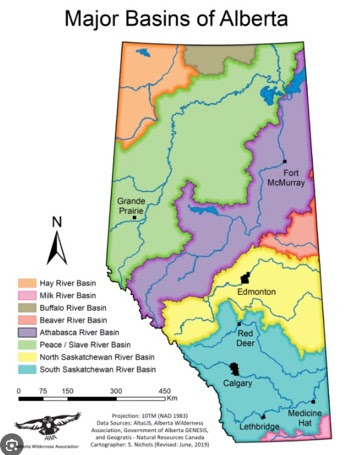


Loch Style Fishing with Traditional Wet Flies
Loch style fishing is a technique used for many years in the British Isles which is now becoming more popular in other parts of the world. A loch style competition was held for the first time in BC in 2011 (see http://lochstyleflyfishing.com/ ) which also gives some good information on the method.) The key elements of loch style fishing are:
· Fishing in a boat using a drogue to slow down its speed, and casting with the wind. This is called a drift.
· Using a long (minimum 10ft, usually 11ft) mid-to-soft action rod (usually Wt 5) with a team of three wet flies.
· Making short casts with little false casting. Fish usually strike when the flies hit the water, when they are being retrieved or when the flies are ‘hung’ prior to re-casting. The ‘hang’ or ‘dibble’ (as I call it) is a very important part of the technique and many hits will come at this time.
The dibble is made more effective by using a well hackled fly on the top dropper which is often greased up to increase buoyancy. Skating this across the surface provokes a take on this fly or the next dropper down. Presentation is best when there is a wave or good ripple, which not only means the boat is covering more ground, but results in more movement of the flies.
By its nature, this method is only really effective when fish are in the top few feet of water, something which is less common here than in the UK. However, I have had some good success with loch style on Beaver Mines Lake in the Crowsnest area in September when the fish were very free rising. It is possible to fish with an intermediate or sinking line where the fish are further down in the water.
In comparison to fishing in a stationary or anchored boat, loch style fishing allows the fisherman to effectively cover a much greater area and number of trout within a similar time-frame. Fishing from a drifting boat provides the added advantage of a stealthy approach that significantly reduces the chance of spooking the trout as the fly is usually the first object they will see.
While the flies used traditionally have been wet flies, chironomids, nymphs and fry patterns may also be used. In addition, lures, boobies and other monstrosities are also seen as appropriate in some circles!
Some useful links:
http://lochstyleflyfishing.com/ (Canadian loch style fishing competition)
http://www.manictackleproject.com/flyfishingarticlelakefishinglochstyle/ (New Zealand)
http://americanangler.com/technique/loch-style (Article on the loch style technique)




Kate McLaren (top dropper fly)
Hook: Size 8 - 14 wet fly hook
Thread: Black 6/0
Tail: Golden pheasant topping
Body: Black seal’s fur or coarse synthetic dubbing
Rib: Oval gold tinsel (or silver)
Body Hackle: Black cock
Head Hackle: Brown or red-brown cock

Mallard and Claret (middle dropper or point fly)
Hook: Size 8 – 14 wet fly
Thread: Black 6/0
Tail: Golden Pheasant tippet feathers
Rib: Fine gold wire
Body: Dark claret seal’s fur or coarse synthetic dubbing
Wings: Bronze mallard
Hackle: Red game cock

Wingless Wickham’s variant (any position)
Hook: Size 8 – 10 wet fly
Thread: brown 6/0
Tail: 4-5 strands of pearl Lureflash or similar (flashabou)
Body: Mid-brown seal’s fur or coarse synthetic dubbing
Rib: Oval gold tinsel
Body Hackle: Red-brown cock
Head Hackle: Red-brown cock








No comments:
Post a Comment